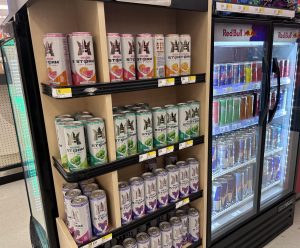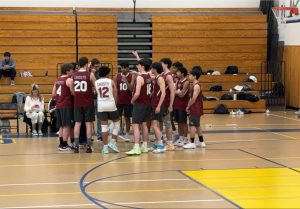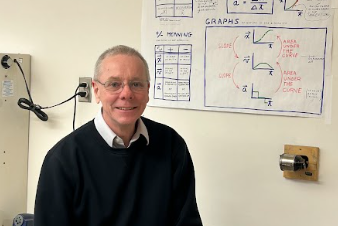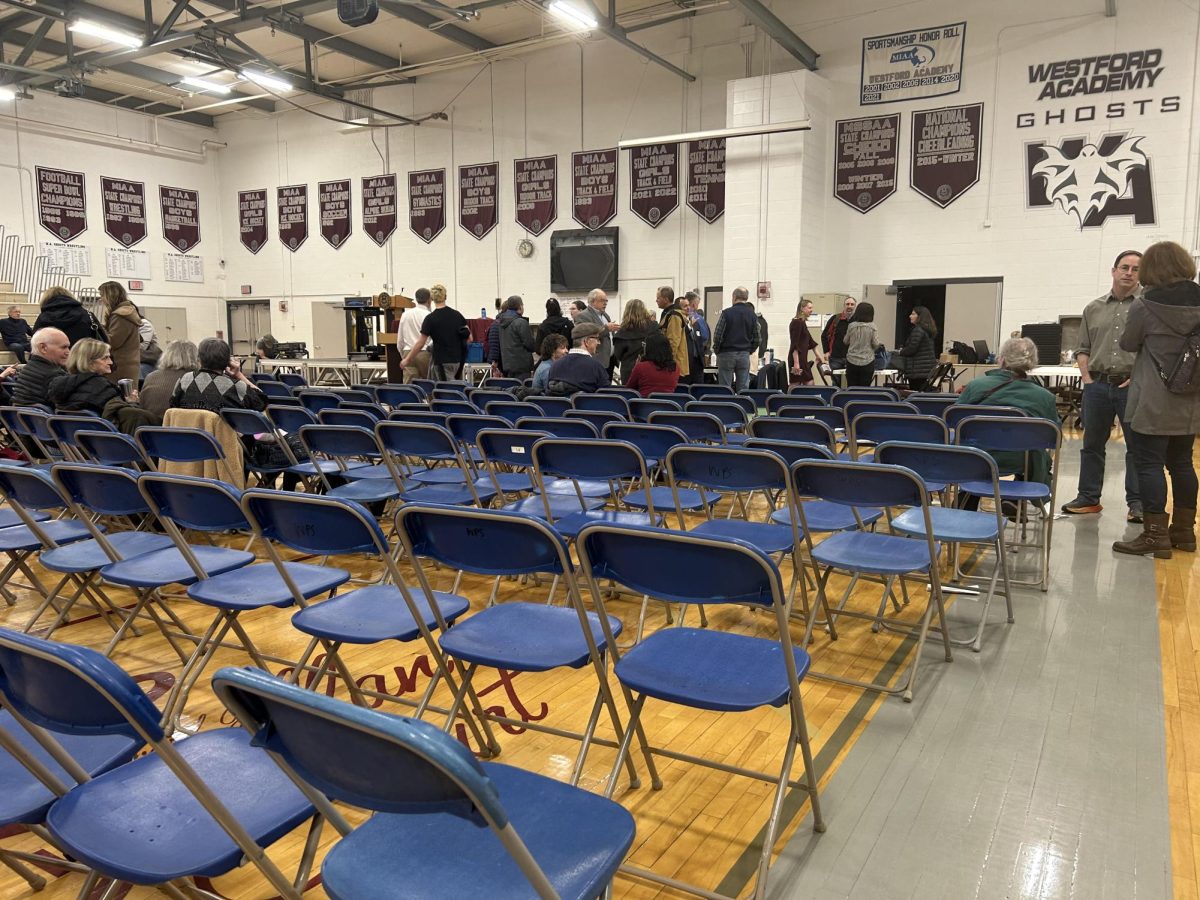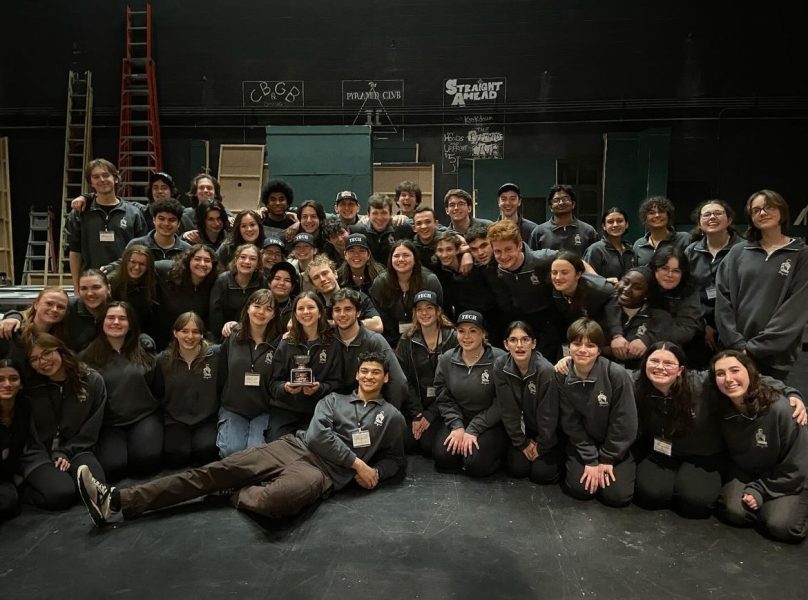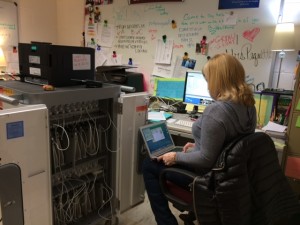
By Kai-Lou Yue
News Editor
Most students at WA enjoy the time they spend in class in the computer labs or with the laptop carts, but being able to use technology in the classroom is currently a fairly rare occurrence. However, that will change in the future, as administrators and the district are working on a plan involving incorporating devices into the classroom curriculum on a regular basis.
This plan goes by the name of the Digital Learning Plan and is expected to occur over the course of 4 years, from 2015 to 2019, in all Westford public schools. It was created by the Digital Learning Plan Committee, which consists of school administrators, teachers, parents, and former students from the Westford community.
The crux of the plan involves schools in the community having a learning environment where students have access to technology to make learning easier.
“It is not about the technology, [but] rather how students are able to learn through the use of technology. We want to provide the students with the devices they need to be successful learners as soon as we can,” said Director of Digital Learning Julie Baudreau.
Methods the committee is considering to use in order to carry out their plan is either the implementation of one-to-one, or Bring Your Own Device (BYOD).
The concept of one-to-one is the school district will pick one device for all students to lease or buy from the school to use in classes. Similarly, for BYOD, students will be using Internet-connected devices in the classroom, but instead of getting it from the school, students can bring any type of device from home, as long as it meets certain criteria.
“Those are the two programs that are out there. So, right now, are we one-to-one, are we BYOD, these are the things we’ve been researching with the way we’re going. There are so many elements […] It’s a big decision, it’s not like, this is what we’re going to do, it’s going to happen. There’s a lot of discussion happening across the board,” said Instructional Technology Specialist and member of the Digital Learning Plan Committee Stephanie Gosselin.
However, incorporating either of the two methods will involve changes to the way classes are run, especially since technology is currently seldom used in daily classroom activities in most courses.
“We can’t go one-to-one with the students, unless the teachers are all onboard, and are all trained, and are ready to work in a very different environment. […] A lot of teachers sit and they’ll say ‘Oh, if only every kid had their computer, I could do it this way,” explained Gosselin.
Currently, this year, according to Gosselin, during the days of professional development, teachers are already learning where and how technology in the classroom will impact the curriculum delivery and student learning.
Some teachers, such as English teacher Brian Mahoney, are ambivalent towards the idea of devices constantly being in the classroom. In some ways, according to Mahoney, it is exciting to have technology in the classroom, as it can assist students in a number of different ways.
“Whenever you’re doing something creative in class […] like a video […] you no longer have to use a projector in class, but everyone can kinda go onto their device and watch the video at their own speed and go back and review things so it’s not as a whole class, but it’s dictated by what the individual student needs […] It’s very progressive,” he said.
However, he adds that he has a few worries concerning the dynamic of the classroom.
“It could separate students from one another […] The idea of […] having [students] all facing the board but the teacher is sitting behind them because he’s worried about what they’re actually looking at on the device, kinda frightens me,” said Mahoney. “[The idea] that I [may not] be at the head of the classroom any longer, but that I might be at the back of the classroom watching over everyone’s shoulders, instead of looking at their faces.”
In order to eventually involve technology in the classroom, the Digital Plan also details other technology related goals for students, teachers, and administrators to reach every year from 2015 to 2019. For example, it states that 70% of students in WA should be proficient in applying core technology skills among other criteria. That percentage is set to increase in the years following.
From the administrator’s perspective, there are many positive aspects of the plan, such as students being able to learn up to date material from sources other than textbooks.
“I think we have technology that’s right at our fingertips that can keep us up to date. […] When we purchase a book right now, for instance, The Americans, you probably carry that around for history. That book is outdated as soon as it gets here. Whereas, if we bought resources [such as laptop] and updated [them] every single year, we’d have cutting edge,” said Principal James Antonelli.
And, the possibility of having textbooks online on a device in the classroom instead of having to bring the book to class is appealing to most students and administrators.
“I don’t like seeing students carry around 40, 50, or 80 pound backpacks. […] Why would kids want to carry around a math textbook when there are certain formulas that teachers teach and so forth [that can be viewed on a laptop],” said Antonelli.
Additionally, teachers may enjoy the convenience of having laptops and other devices in the classroom. Occasionally, teachers want to do something in class with the laptops, but there are no more vacant carts or labs.
“I think one of the greatest things teachers would like is not having to sign out a cart, not waiting for a cart to be delivered, and not have to go to a lab. Everything is right there in the classroom,” said Gosselin.
On the other hand, despite the progress the committee has made with the plan, there are a few problems that need to be resolved before some aspects can be carried out.
One of the main problems is determining how the school is planning to fund the technology initiatives, but besides that, there are also internal issues with the school that need to be fixed.
“Some of the concerns are with infrastructure. Let’s say we went with Bring Your Own Device. There [would be] a lot of people trying to get onto the server, so that’s a potential problem. If we went to one-to-one and had students buy their own, or lease to own, some parents are going to be balking at that, saying ‘We already have a computer,’ […] so we have to think about that,” said Antonelli.
As Mahoney stressed, another potential issue is that students may not be focusing on their schoolwork with the distraction of a device in front of them, but Gosselin does not believe it will be more of an issue than it is currently.
“Of course it’s always a concern what students are doing with or without their technology [or] if they’re doing actual work. […] A well-designed classroom, a well-designed transition is going to prevent that from happening,” she said.
According to the Digital Plan, implementation of technology in classrooms and the curriculum will probably not occur until later on in 2019, but the faculty is working towards it. Changes, such as to the Wi-Fi infrastructure, and to teacher professional development, are already taking place.
“I’m excited about it […] I think if you lay things out and take a thoughtful approach for it, it can be a win-win for our students, it can be a win-win for our faculty, and ultimately I think our students will be even better looking forwards […] You’re going to be doing stuff online, you have the potential to do more online, you have the potential to do a lot more independent learning […] We have to be ready for that,” said Antonelli.
Watch the video below for student reactions to technology in the classroom.

